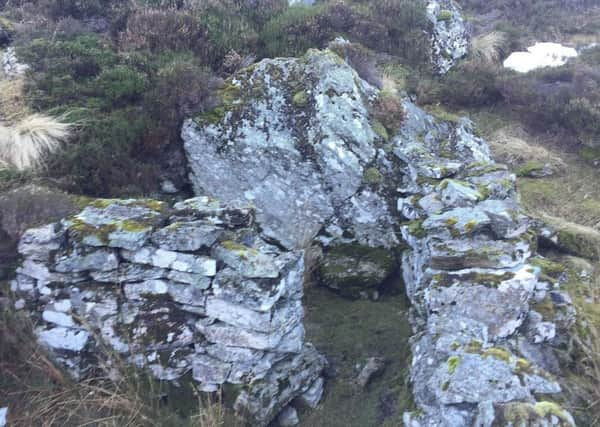Site of illegal whisky bothy found on Scottish hillside


The bothy was found in the Cabrach area on the southern edge of Moray, once known as a legendary haunt of distillers.
Still partly intact, the structure is sheltered by a small crag and was built into the side of the hill, offering smugglers a vantage point to keep an eye out for excise men on the nearby highway.
Advertisement
Hide AdAdvertisement
Hide AdThe bothy, situated near Clayshooter Hill, was discovered by historians Gregor Adamson and Dr Kieran German, who are currently researching local whisky distilling methods used in the Cabrach area in the 18th and 19th centuries.
Dr German said: “The bothy is nestled in a small neuk and, undoubtedly, illicit distillers using this site would have had a clear view of excise men approaching.
“From the road, the only possible tell-tale sign of the bothy would be smoke arising from the process of distilling, but the backdrop of the hill and the weather would often obscure even this indicator of the illicit activity taking place.
“The existing well bears all the hallmarks of a smuggler’s bothy. In addition to being hidden, it is comprised of built stone walls to the front and side, and also has an entrance.
“The walls remain intact and the footprint of the bothy is easily identifiable. It is built into the side of the hill, so the two other walls are of earth and stone.
“A stream runs past one of the walls, before disappearing underground, so there was a constant source of running water.”
The bothy measures less than a square metre and would have had a roof covered in heather to disguise it.
Advertisement
Hide AdAdvertisement
Hide AdThe Cabrach was once known for its illicit distilleries, with some local inhabitants mixing farming and smuggling with great skill.
The newly-discovered bothy is located close to Powneed, home of notorious smugglers Ebeneezer and Peter Bain.
In 1823, after a number of attempts by the government to put an end to illicit distilling and smuggling, a new Act of Parliament heralded the era of commercial whisky production.
The latest findings will be used to shape plans by the Cabrach Trust to transform the existing Inverharroch Farm into a new whisky distillery operating on authentic historical methods.
Sue Savege, executive director of the Cabrach Trust, said: “This is a significant find and gives us some important insight into the role the Cabrach and its people played in the history of whisky.”
The Cabrach Trust was established to facilitate rural regeneration in and around the area.